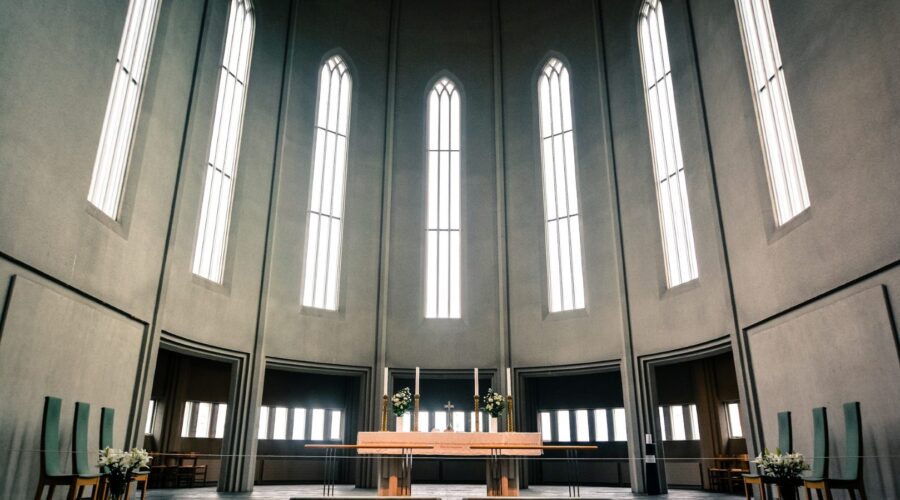Your cart is currently empty!
Unveiling the Grandeur of St. Peter’s Church: A Comprehensive Guide to Its History, Architecture, and Significance

Introduction
St. Peter’s Church, commonly known as the Vatican Basilica, stands as an architectural and spiritual masterpiece that has captivated the world for centuries. Its awe-inspiring presence and rich history have made it a pilgrimage site, a cultural icon, and a testament to the enduring legacy of Christianity.
Historical Background
Foundation and Early Years
The origins of St. Peter’s Church date back to the time of the Apostles. According to tradition, the church was built on the site where Saint Peter, the first Pope, was martyred and buried. The initial basilica was built by Emperor Constantine I in the 4th century and became a major pilgrimage destination. Over time, the original structure was gradually modified and expanded.
Renaissance and Baroque Transformations
During the Renaissance and Baroque periods, St. Peter’s underwent significant architectural transformations. Pope Nicholas V commissioned the reconstruction of the basilica in the 15th century, which led to the addition of the dome designed by Brunelleschi. In the 17th century, Bernini created the iconic colonnade that encircles St. Peter’s Square and designed the monumental baldachin over the altar.
Architectural Marvels
Dome
The dome of St. Peter’s Basilica is one of the most remarkable feats of engineering and architecture in history. Designed by Michelangelo, it has a diameter of 136 feet and rises to a height of 455 feet. The dome is supported by four massive piers and is decorated with a stunning mosaic depicting the Resurrection of Christ.
Nave and Aisles
The nave of St. Peter’s is a vast and majestic space that extends for over 600 feet. It is flanked by double aisles that are decorated with a series of chapels, each dedicated to a different saint or patron. The ceiling of the nave is adorned with intricate frescoes and mosaics.
Apses
At the far end of the basilica, behind the altar, lie the two apses. The central apse, known as the Apse of the Chair, houses the relic of St. Peter’s chair. The other apse, the Apse of the Tribune, contains a series of 13th-century mosaics depicting the life of Christ.
Artistic Masterpieces
St. Peter’s Basilica is a treasure trove of artistic masterpieces. Among its highlights are:
- Pieta by Michelangelo: A life-size marble sculpture depicting the Virgin Mary holding the body of Jesus.
- The Transfiguration by Raphael: A painting depicting Christ’s transfiguration on Mount Tabor.
- Bernini’s Bronze Canopy: A monumental bronze canopy that stands over the altar, designed by Bernini.
- St. Longinus by Gian Lorenzo Bernini: A dramatic marble sculpture depicting the Roman centurion who pierced Christ’s side with a spear.
Religious Significance
St. Peter’s Basilica is the most important church in the Catholic world. It is the seat of the Pope and the center of the Roman Catholic Church. The church hosts major religious ceremonies, including papal masses, canonizations, and ecumenical gatherings.
Visiting St. Peter’s Basilica
Visiting St. Peter’s Basilica is a must-do experience for any traveler in Rome. Here are some tips for planning your visit:
- Book a Guided Tour: To fully appreciate the history and art of the basilica, consider booking a guided tour.
- Dress Appropriately: As a place of worship, modest attire that covers shoulders and knees is required.
- Arrive Early: Expect long queues during peak season, especially during religious ceremonies.
- Explore the Vatican Museums: The nearby Vatican Museums offer an extensive collection of art and artifacts related to the basilica and the Vatican.
- Climb to the Dome: For panoramic views of Rome, climb to the top of St. Peter’s dome.
Conclusion
St. Peter’s Basilica is a living testament to the grandeur and significance of Christianity. Its architectural marvel, artistic masterpieces, and religious importance make it a destination that continues to inspire awe and devotion in millions of visitors each year. From its humble beginnings to its present-day splendor, the Vatican Basilica stands as an enduring symbol of faith, history, and human ingenuity.